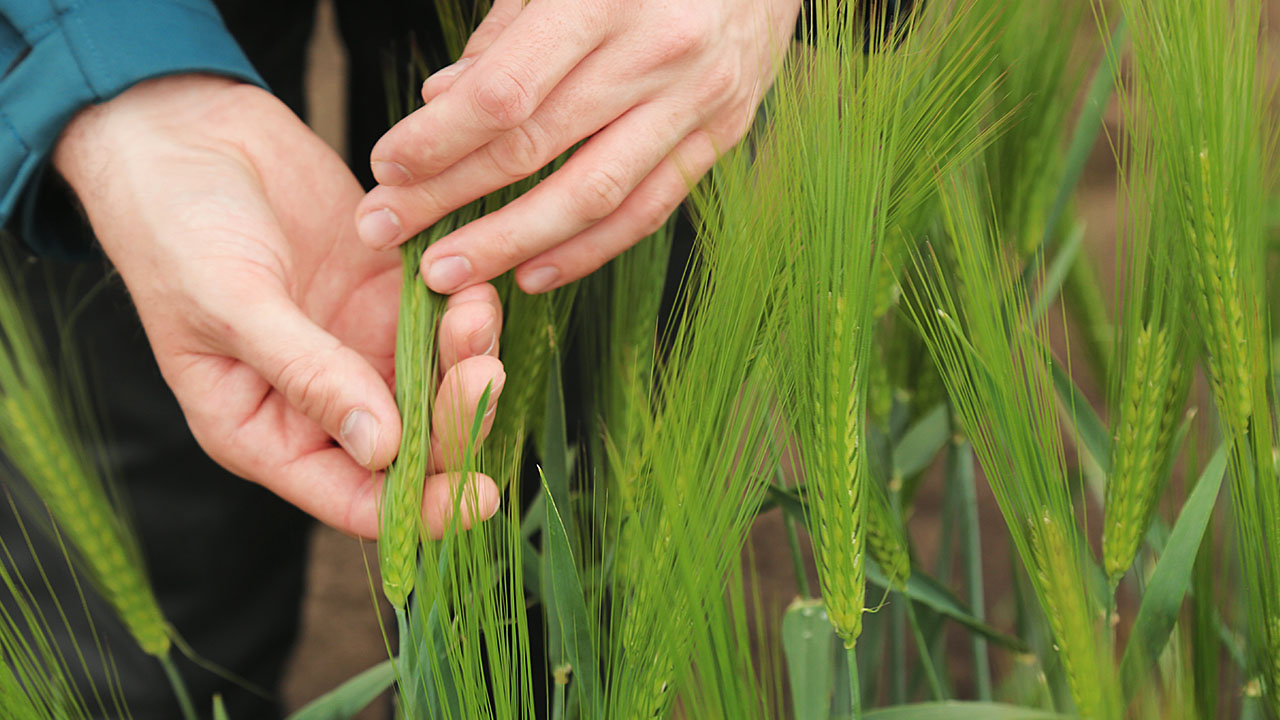
At first glance, the evergreen Caper Spurge (Euphorbia lathyris) is a less-than-impressive plant. Nevertheless, this herb does indeed pack some punch: the seeds contain 40-50 percent fatty oil. This abundantly flowing ‘latex’ also contains 8-12 percent volatile unsaturated hydrocarbons known as terpenes. What as really attracting the interest of scientists is the terpenes that take the form of energy-rich ‘triterpenoids’. This is because they represent a possible additive for biofuels. Moreover, because the plant grows on dry and poor, the use of the plant for fuels would represent an opportunity to relieve pressure on valuable arable land. With the support of the German Federal Ministry of Research, an international team of scientists – including participation from German researchers headed by Hans-Peter Mock from the Leibniz Institute of Plant Genetics and Crop Plant Research (IPK) – is now giving the plant its chance to shine. The objective is an improved understanding of the wild plant and an opportunity to explore its optimisation for use as an energy crop.
Euphorbia is popular in Germany above all because of its pretty fractal-like patterns and, for home gardeners, for its purported protective effect against voles. For Hans-Peter Mock at the Department of Physiology and Cell Biology at IPK Gatersleben, it is another aspect entirely that makes the plant an interesting subject: spurge contains an abundance of milky sap with a high proportion of energy-rich hydrocarbons, otherwise known as triterpenoids. As an admixture, these could well be put to use to give biofuels extra kick. The researcher first developed an interest in the plant some decades ago.
Caper spurge as gasoline plant
As far back as the mid-Seventies, the American plant scientist and Nobel Prize winner Melvin Calvin (discoverer of the Calvin cycle in the plant metabolism), suggested using Euphorbia as ‘gasoline plant’. Although these plans were never implemented, there has been revived interest in the subject. “Euophorbia thrives on lean soils, and can be found, for example, in Spain’s arid regions,” explains Mock, head of the Applied Biochemistry working group at the IPK. Working together with other researchers in Spain and France, his team is now investigating whether the spurge family can be put to use as an energy crop. The oil corporation Repsol and Spanish firm Synergia are providing support on the industrial side. The Federal Ministry of Research is supporting the work at the IPK from 2010 to 2013 with around 227,000 euros as part of the research initiative Plant-KBBE II and within the framework of the project Eulafuel, which stands for ‘Production of energy-rich triterpenoids in Euphorbia lathyris, a potential crop for third-generation biofuels’.
Numerous defence substances in the latex
Using a wide range of molecular, biochemical and histological techniques, the scientists having been zoning in on the plant to gain an understanding of the composition and formation of the so-called latex. There has been a clear division of labour from the outset: the French researchers at the Institute of Plant Molecular Biology of the National Centre for Scientific Research (CNRS) and the University of Strasbourg have been concentrating on the metabolites in the Euphorbia. The scientists in Barcelona and Valencia are focused on the RNA-related aspects. A view into the transcriptome reveals the state of activation of genes in a plant at any one time. The IPK team, on the other hand, is studying the protein composition of the latex. “We have gathered a great deal of information,” says plant researcher Mock. “It has been surprising to see how many different irritant or allergy-causing substances are present in the latex.” Thereby, the scientists have been subjecting the liquid to a barrage of analytical techniques. “Firstly, we had to remove commonplace proteins in order to analyse the rarer molecules,” reports Mock. The latex contains specific substances that can quickly cause proteins to malfunction and thus detract from analyses. Here, the trick of the scientists was to add special enzymes that disassemble the proteins into numerous fragments, the peptides. This stops the malfunctioning and enables deeper analysis.
Commercial implementation feasible in principle
The spurge plants also use the latex as a defence against enemies. Components such as ingenol and ingenol esters can cause irritation of the skin, so much so that, at harvesting time, gloves are used to handle the plant, to avoid allergic reactions. But what could at first seem to preclude commercial use may indeed to be something beneficial. The idea of the researchers is to create plants in which only a comparatively small quantity of defence substances is produced, and to use the surplus energy to form greater quantities of triterpenoids. In view the evidence gathered in the course of the project to date, the participating companies Repsol and Synergia in Spain consider commercial implementation to be possible. Repsol, one of the ten largest private oil companies in the world, has been systematically researching renewable resources since 2010. In that year they founded the ‘New Energy Business Unit’, which is studying the use of Jatropha oil, among other subjects. Much like Euphorbia, Jatropha is another plant that can withstand particularly austere conditions. Nevertheless, even in the best case it will take some years until the Caper Spurge is fit for industrial application on a large scale. The team at the IPK has already profited from the work, says Mock: “Together with a Polish partner, we are studying the tetterwort plant for ingredients that can be put to medical use. Here, the experiences gained with Euphorbia have been extremely useful.”
Autor: Bernd Kaltwasser


